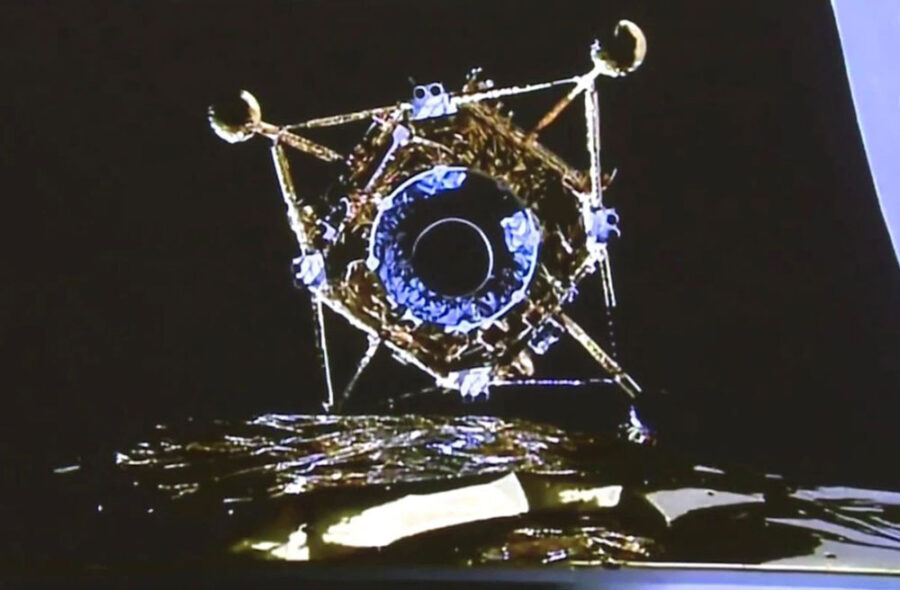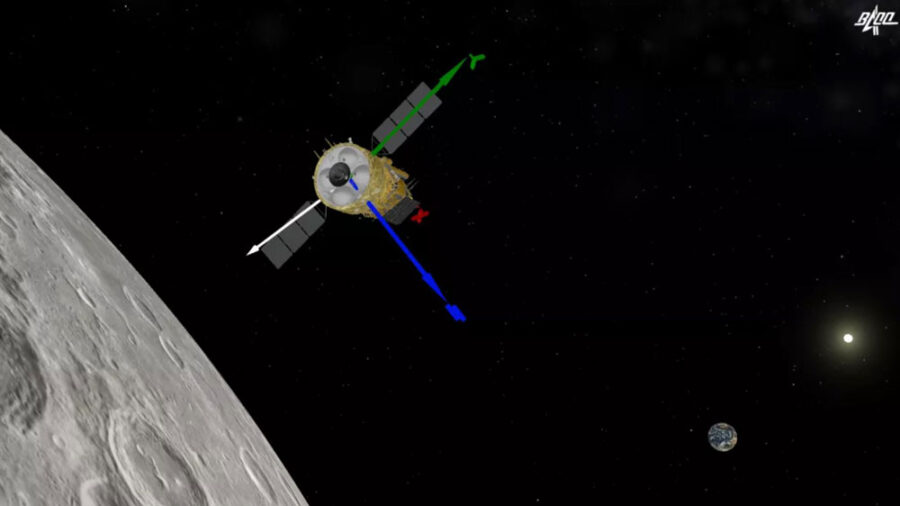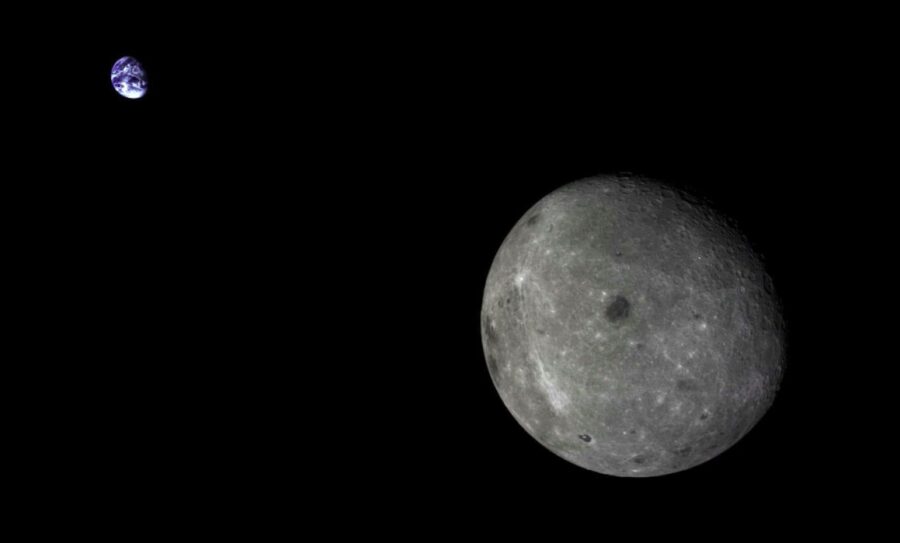China’s Chang’e-5 spacecraft helped deliver samples from the Moon to Earth, but now it’s heading for an extended mission to observe the Sun.

CNSA / CLEP
The orbiter that successfully brought Chang’e 5’s lunar samples back to Earth is continuing on an extended mission toward areas of the solar system that China has yet to visit.
The orbiter dropped off the mission’s return capsule for a skip-reentry on December 17th, ending an intense 23-day expedition to obtain the youngest lunar samples so far collected. But the orbiter wasn’t done. Thanks to its insertion into a precise lunar orbit trajectory, the orbiter had plenty of remaining propellant. Following its capsule release, it performed a maneuver to avoid Earth and head for new deep-space territory.
An update from the China Lunar Exploration Program (CLEP) on January 19th states that the spacecraft is now 1.43 million kilometers (889,000 miles) from Earth and will arrive at the L1 Sun-Earth Lagrange point in mid-March. Once at L1 between Earth and the Sun, the probe will test the design and control of the orbit, take readings of the radiation environment, and make observations of the Sun.

CNSA / CLEP
This gravitationally stable orbit offers a prime vantage point for solar observations. The 25-year-old Solar and Heliospheric Observatory (SOHO) still operates there, as does NASA’s Deep Space Climate Observatory (DSCOVR).
What will follow remains a mystery, however. Sheng Ruiquin, deputy director of the Chang’e 5 design team, said that his team will “evaluate the next phase of the mission based on the orbiter's status at L1.”
Sheng says that the spacecraft should have more than 100 kilograms of propellant remaining. Wile vague, this puts some constraints on what is possible.
Spaceflight observer Jonathan McDowell (Center for Astrophysics, Harvard & Smithsonian) says this could tentatively rule out the capability for a change in velocity, for example to fly toward Venus. It also makes a flyby of a near-Earth asteroid unlikely, though such a flyby would help the ZhengHe mission, due to launch in 2024, as it prepares to sample the former minimoon 469219 Kamoʻoalewa, initially dubbed 2016 HO3.
However, one option that might still be in the cards is a visit to the Sun-Earth L4 or L5 Lagrange points. These more stable regions, 60° ahead and behind Earth in its orbit, are theorized to hold co-orbiting “Trojan” objects. Chang’e 5 could use its imagers to check one of these Lagrange points for the presence of Earth Trojans. So far, one object, 2010 TK7, has been confirmed to be oscillating around L4.
China has a history of extending its lunar missions. Chang’e 2, China’s second lunar orbiter launched in 2010, departed for the Earth–Sun L2 Lagrange point after completing its primary mission. It then used its remaining propellant for a flyby of near-Earth asteroid Toutatis in December 2012.
Chang’e 2 continued into deep space before contact was lost in 2014, according to Xinhua (Chinese). The Chang’e 5 orbiter is thought to carry more capable communications arrays than its predecessor.

CNSA / CLEP
China also repurposed the service module of the Chang’e 5 T1 mission, a test mission that launched in 2014 to test the high-velocity lunar return and skip-reentry required for the later sample return. The module traveled to Earth-Moon L2, on the other side of Earth from the Sun. That turned out to be a trial run for a relay satellite that facilitated Chang’e 4’s unprecedented landing on the lunar far side.
The Chang’e 5 extended mission marks a first excursion inside Earth’s orbit. Elsewhere, China’s first independent interplanetary mission, Tianwen 1, is due to enter Mars orbit on February 10th. A rover landing attempt is expected to follow in May.
 0
0









Comments
You must be logged in to post a comment.